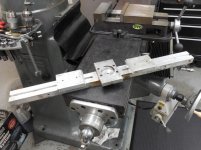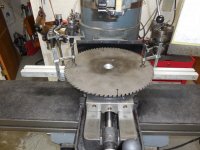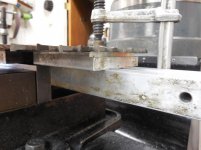LivinNstiX
Plastic
- Joined
- Apr 3, 2021
- Location
- Pennsylvania, USA
Long time lurker, first time poster.
Looking for ideas on a work holding fixture to bore out arbor holes in saw blades from 12" diameter up to 46" diameter. So far I use 2"x 2" square tubing bolted to the table as seen in the pictures. I have a quote out for a permanent electromagnet chuck. The arbor holes all start at at-least 1" and I turn them out between 50mm - 150mm depending on the order. I use an offset boring bar setup right now but looking into a few annular cutters to speed up the process.

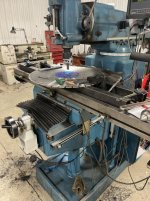
Looking for ideas on a work holding fixture to bore out arbor holes in saw blades from 12" diameter up to 46" diameter. So far I use 2"x 2" square tubing bolted to the table as seen in the pictures. I have a quote out for a permanent electromagnet chuck. The arbor holes all start at at-least 1" and I turn them out between 50mm - 150mm depending on the order. I use an offset boring bar setup right now but looking into a few annular cutters to speed up the process.




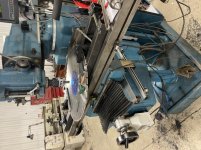
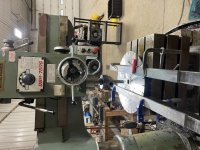
 .......and marine ply (even the very best resin bonded trailer decking stuff) is much cheaper than any metal, ........and will grip the saw blades better than metal
.......and marine ply (even the very best resin bonded trailer decking stuff) is much cheaper than any metal, ........and will grip the saw blades better than metal